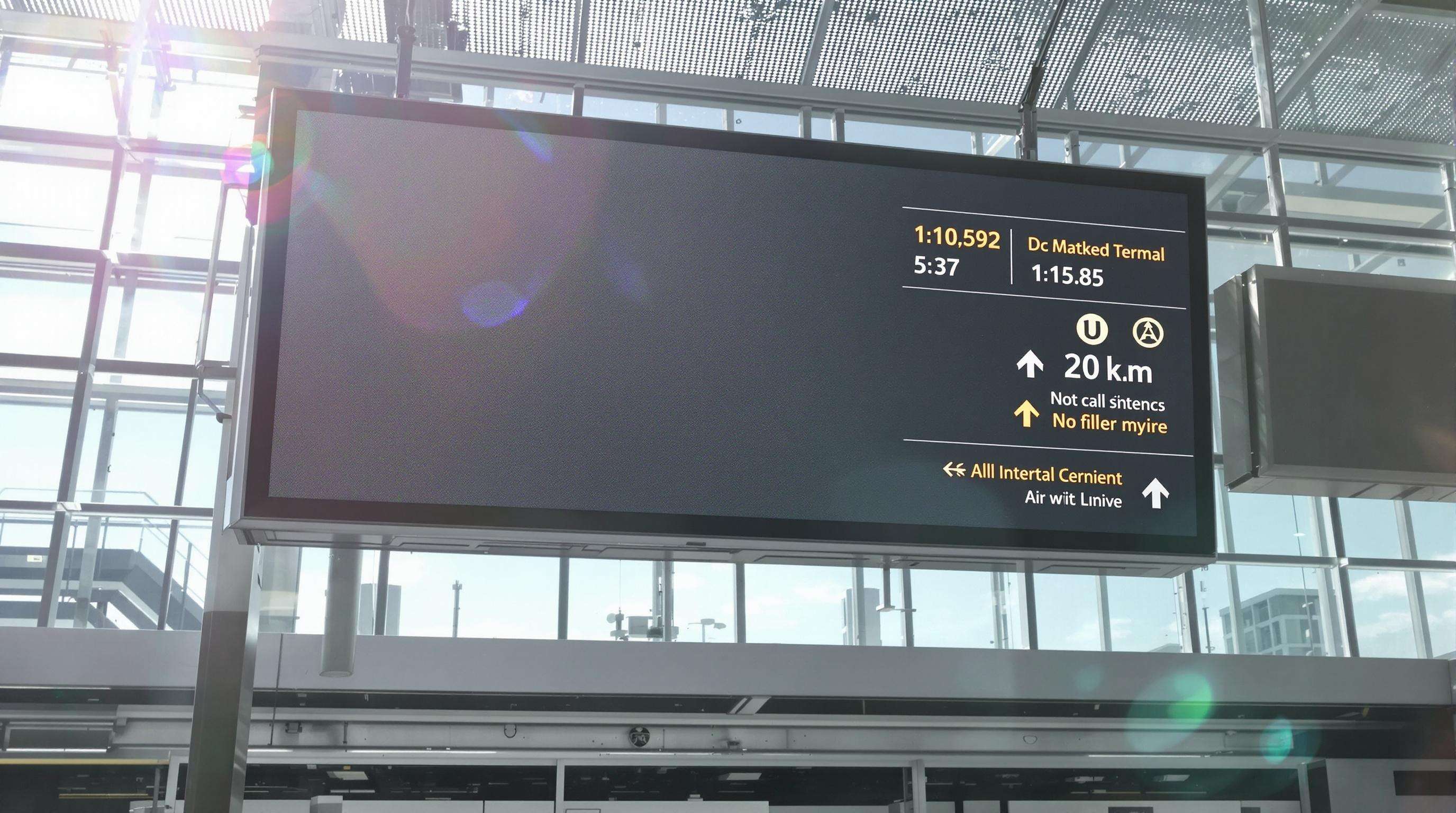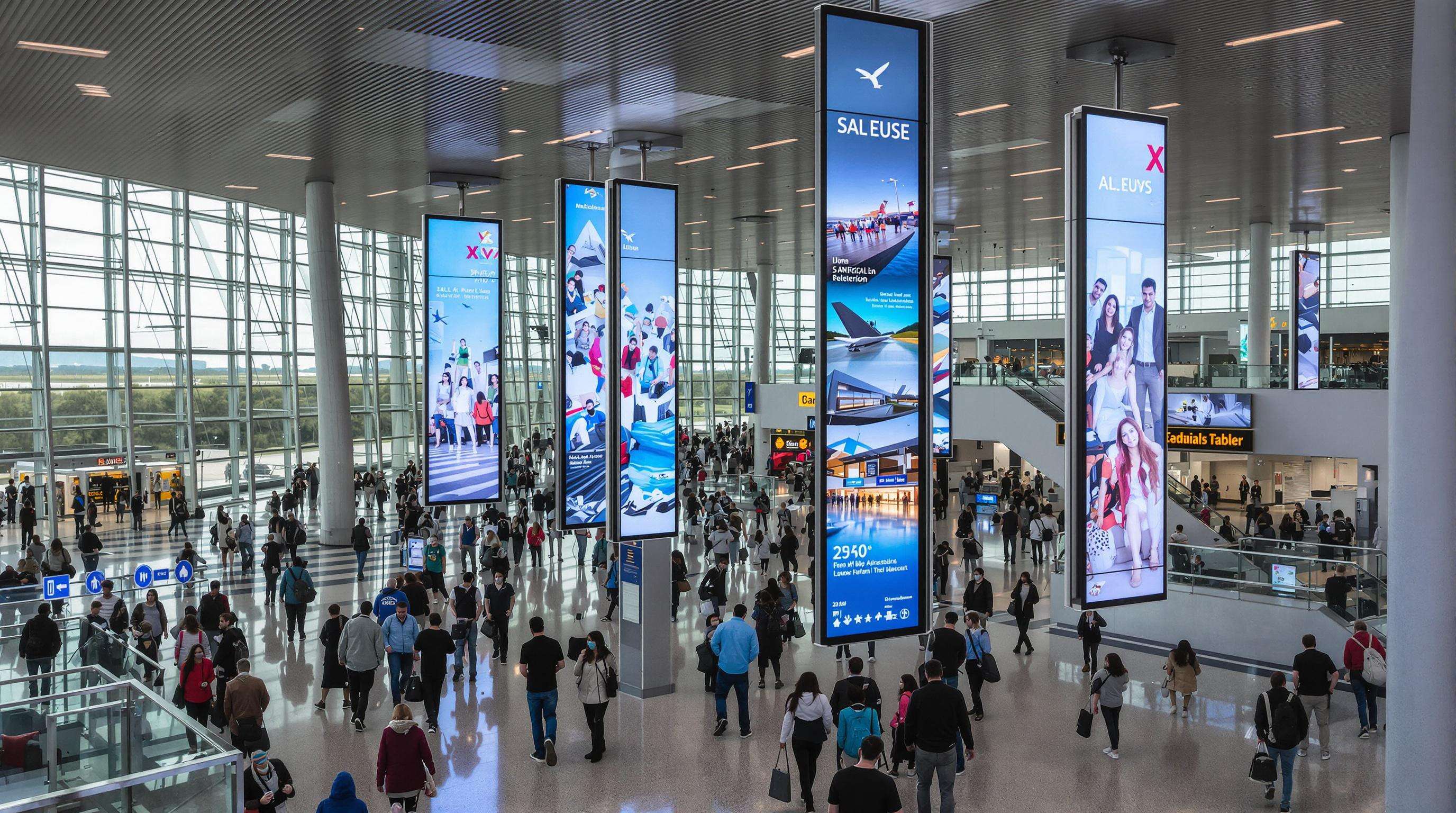Airport terminals feature extensive glass architecture for natural lighting, creating conflicts between external sunlight and indoor LED displays. When solar radiation penetrates terminal windows, it causes content-washout, particularly during dawn/dusk when solar angles directly strike digital signage.
Conventional LED panels utilize inorganic glass surface layers that reflect 15-30% of incident terminal lighting, creating "hotspot" distortions. Their polished composition scatters ambient light, demanding advanced material science interventions.

Modern nanoimprinted textures (5–10µm depth) redirect reflections beyond 30° from viewers’ sightlines, maintaining sunlight readability at 100,000 lux while preserving 92%+ color gamut integrity. Key specifications include:
Smart light sensors synchronize with content management software, adjusting screen luminance (300–2,500 nits) with 0.2-second response times. Recent implementations at European hubs show a 40% reduction in passenger viewing complaints.
Silica nanoparticle coatings applied to 180 panels achieved:
A 2024 LED maintenance analysis revealed:
| Coating Type | Mean Time Between Cleaning | Clarity Loss/Year |
|---|---|---|
| Standard AG | 14 days | 12% |
| Hybrid Nano | 21 days | 7% |

Modern airports require LED displays with 160-degree viewing angles, maintaining ¥300:1 contrast ratio across sightlines. Vertically staggered installations reduce glare-related passenger confusion by 37%.
Ambient light sensors adjust brightness (600-1,200 nits), cutting energy use by 40%. Advanced panels with micro-louver filters maintain ISO 13406-2 clarity standards while using 25% less power.
Anti-glare LEDs eliminate visual interference, increasing passenger dwell time near advertisements. Color accuracy is preserved even under direct light, with Delta-E values below 3.0—the industry threshold for imperceptible color variation.
| Display Type | Color Shift (Delta-E) | Saturation Retention |
|---|---|---|
| Standard LED Panel | 7.0–9.2 | 55%–65% |
| Anti-Glare LED Screen | 1.8–2.7 | 92%–95% |
Microfiber cloths with pH-neutral solutions preserve optical clarity, while ammonia-based cleaners degrade nano-coatings by 70%. Daily dry-wiping and bi-weekly damp cleaning maintain transmittance above 92%.
IoT-enabled sensors monitor ambient light fluctuations and recalibrate brightness when glare thresholds exceed 500 lux, reducing manual interventions by 45%.
Automated maintenance systems for 2,300 displays lowered upkeep expenses by 31% over five years—a 19:1 ROI from predictive maintenance.
Glare is primarily caused by the conflicts between extensive glass architecture in terminals and direct solar radiation which leads to content washout on the displays.
Anti-glare LED screens use advanced technologies such as nanoimprinted textures and smart sensors to minimize reflections and improve screen readability in bright environments.
Anti-glare screens increase passenger dwell time near advertisements by preserving color accuracy and eliminating visual interference even under direct sunlight.
Automated maintenance systems for anti-glare displays lower upkeep expenses and increase return on investment, reducing costs by up to 31% as observed in Zurich Airport.